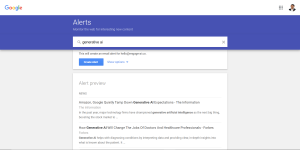Over the last 2 years, LinkedIn users have been feeling the increasing pressure for newer, more effective strategies to improve their profile’s visibility.
Following the major algorithm update back in the last quarter of 2021, many users who rely on LinkedIn to funnel leads into their business have noticed that LinkedIn is showing their content to their first-level connection at a much more gradual pace. But while that is the case, early engagement is still an important factor that determines the level of reach your content receives.
In essence, without sufficient engagement, your content inevitably sinks despite your best efforts in planning and writing it.
The rise of LinkedIn engagement tools
Just as there are numerous SEO strategies in the market, many businesses strive to provide individuals or other businesses with a platform to speak and be heard. These businesses provide the technology and community, just like a broadcasting company promoting ads for brands that want to remain top of mind.
Among these LinkedIn engagement tools, automated engagement systems have been gaining traction over the past few months. Ironically, automated engagement systems are losing effectiveness despite this surge because of LinkedIn’s latest algorithm update.
What are automated engagement systems?
Automated engagement systems typically come in the form of a Google Chrome extension. Users sign up for a membership, which allows them to submit their LinkedIn post links within the extension. The chrome extension will then automatically assign other users in the same pod or group to:
- Like the submitted post
- Comment on the submitted post
How automated comments work
Typically, the pod leaders or system admins of an automated engagement system will have created a set of pre-created comments. These comments are understandably generic, so they’re suitable for any post on LinkedIn.
Some automated engagement systems take comments to the next level by allowing users to update comments that appear on their posts manually. However, as attractive as this idea may be, users whose profiles are used for these customised comments quickly realise how damaging it can be for their reputation (more on this later).
For one, they’re not privy to the comments made in their place unless someone in their network sees the pre-configured responses and points them out. As an unsurprising result, many users tend to turn off automatic commenting, which in turn narrows down the commenter pool by a large margin most of the time.
A great copy attracts the right people,
but can the right people find your copy?
So, why are automated engagement systems popular?
Using an automated engagement pod is less time-consuming, unlike manual engagement groups on Telegram and WhatsApp.
Furthermore, many businesses like the idea of guaranteed engagement via likes and comments – something that manual engagement groups severely lack.
As long as they’re in the right pod and have sufficient tokens to exchange for engagement, they can expect an equivalent exchange.
The issues with automated engagement systems
I’ve tested numerous of these automated pods, and the discoveries I made were equally frustrating and worrying.
Here are 7 top concerns I have after testing them:
Poor engagement rate
Ironically, the guaranteed likes and comments – the supposed value proposition of these systems – are not as guaranteed as I’d come to realise. Most users have the liking functionality turned on, but it’s estimated that less than 50% of the members have commenting turned on.
As engagement contributes strongly to a high post virality score, the lacking comments provided by the pod means that the submitted posts don’t actually receive higher visibility.
Misuse and abuse of commenting functionality
The commenting functionality is like a double-edged sword. If you want to boost engagement via comments from the system, you’re also consenting to have your profile used by other pod users for comments on their posts. You may have complete control over what others are commenting on your posts, but that also applies to fellow users.
With how the commenting functionality is designed in automated engagement systems, there are numerous accounts of users abusing this functionality by using other users’ profiles to leave inappropriate, reputation-damaging comments. And it gets worse – by the time you learn about it, your prospects and network may have already seen the comment left using your LinkedIn profile.
Poor-quality comments
Total control over comments is a welcomed feature when used properly. However, most users often opt to use the default comments created by the system to save time.
A few generic comments on your content aren’t unusual. However, it becomes very obvious when someone uses an automated engagement system. At a glance, having hundreds of comments on every single post may seem impressive.
Nevertheless, if all the comments happen to be “Thanks for sharing!” and “Amazing post!”, that’s a different story. When others, particularly your prospects who follow your work, profile and posts closely, notice this pattern over time, they’ll lose trust and distance themselves.
Obvious pod activity due to inorganic engagement timing
Apart from language, timing is another issue that may put your LinkedIn profile at risk. An Australian user who posts in the morning and receives engagement from someone in Europe when it’s midnight in the latter’s timezone leaves a trail for the LinkedIn algorithm to detect gaming activities.
Obvious pod activity due to small pod size
The number of members varies from pod to pod. Some could have less than 10 members, whilst others could have over 50. From personal experience testing out multiple automated pod systems, though, pods tend to have around 20-30 members on average. Such small pods often make gaming activities obvious to both human and machine.
There are certainly outliers – some with over 100 members – but these more popular pods tend to have members who have not been active on LinkedIn for a long time or have commenting functionality turned off.
Obvious pod activity due to lack of randomisation
Have you ever noticed that certain people in your LinkedIn network almost always have the same group of people commenting on their posts? Even if these commenters are their first-level connections, it makes little sense that they’d engage with every single post.
Automated engagement systems don’t allocate members to submitted posts by random. As a result, it leaves an obvious pattern of gaming activities for the human and machine to see.
Obvious pod activity due to digital footprint
LinkedIn engagement tools may use different technology backend. Some are web platforms, while others are Chrome extensions.
It’s well-documented that automated engagement systems in the form of Chrome extensions often leave digital footprints. In other words, LinkedIn can easily see the trail of data you leave whenever you use automated systems such as Linked Helper. Subsequently, LinkedIn may suspend your LinkedIn account for a period of time or terminate it entirely.
Bottom line
In summary, automated engagement systems may seem to be the ideal solution for LinkedIn users to gain more exposure. In reality, however, there are many underlying risks associated with them and using them may do more harm than good to your LinkedIn profile.
Discover how other businesses from the same industry use our solution to gain more visibility on LinkedIn without risking their profile.








